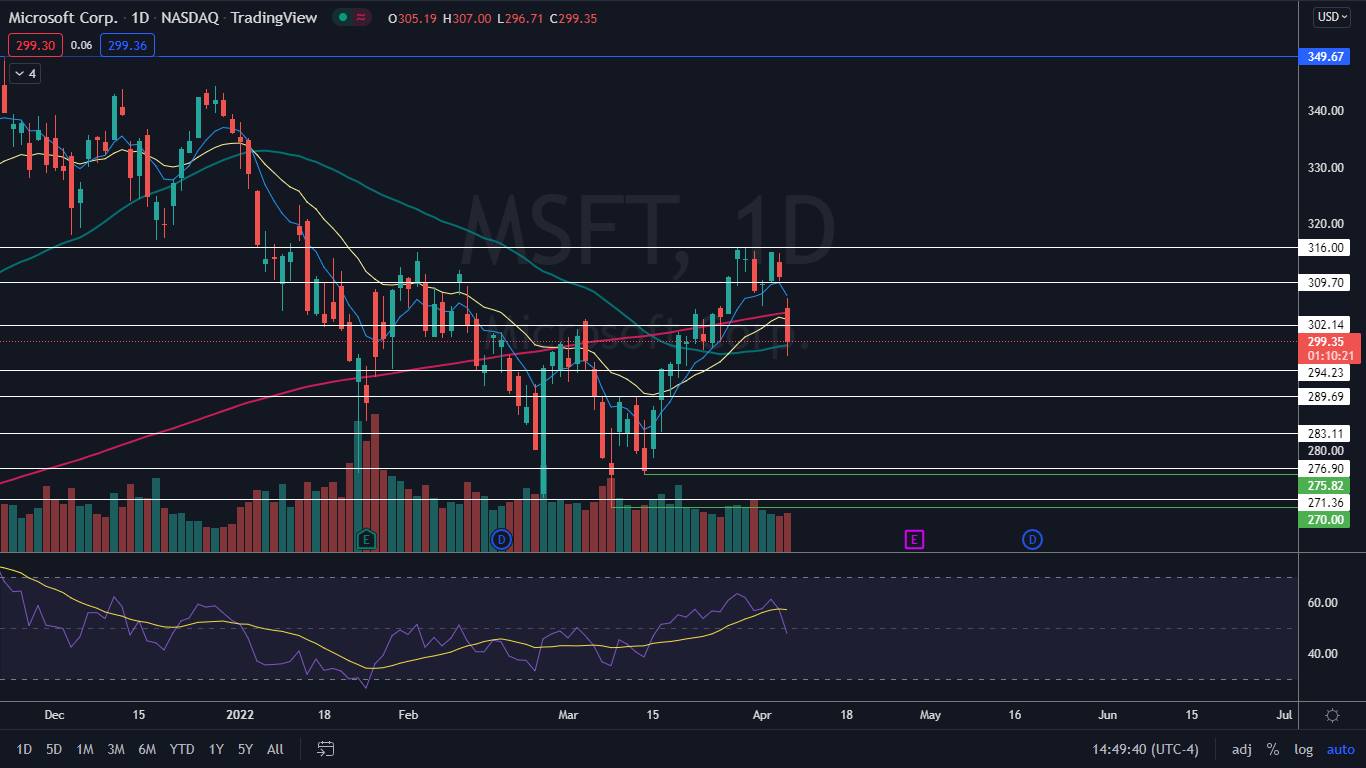
Microsoft Corporation (NASDAQ:MSFT) gapped down to then fall about 4.5% lower at one point on Wednesday, confirming the stock has entered into a new downtrend on the daily chart.
A downtrend occurs when a stock consistently makes a series of lower lows and lower highs on the chart.
The lower lows indicate the bears are in control, while the intermittent lower highs indicate consolidation periods. Traders can use moving averages to help identify a downtrend, with descending lower timeframe moving averages (such as the eight-day or 21-day exponential moving averages) indicating the stock is in a steep shorter-term downtrend and descending longer-term moving averages (such as the 200-day simple moving average) indicating a long-term downtrend.
A stock often signals when the lower low is in by printing a reversal candlestick such as a doji, bullish engulfing or hammer candlestick. Likewise, the lower high could be signaled when a doji, gravestone or dragonfly candlestick is printed. Moreover, the lower lows and lower highs often take place at resistance and support levels.
In a downtrend the "trend is your friend" until it’s not and in a downtrend, there are ways for both bullish and bearish traders to participate in the stock:
- Bearish traders who are already holding a position in a stock can feel confident the downtrend will continue unless the stock makes a higher high. Traders looking to take a position in a stock trading in a downtrend can usually find the safest entry on the lower high.
- Bullish traders can enter the trade on the lower low and exit on the lower high. These traders can also enter when the downtrend breaks and the stock makes a higher high indicating a reversal into an uptrend may be in the cards.
Also Read: Apple Vs. Microsoft: A Race To New All-Time Highs
Want direct analysis? Find me in the BZ Pro lounge! Click here for a free trial.
The Microsoft Chart: After Microsoft reached a high of $316 on March 30, the stock printed a doji reversal candlestick and entered into a downtrend. The trend confirmed on Wednesday when Microsoft printed a lower low at the $296.71 level, which was under the previous low of $305.54.
- On Wednesday, Microsoft opened the trading day just above the 200-day simple moving average (SMA) but quickly lost support at that level and fell below it. A death cross developed on Microsoft’s chart on March 15, and if the stock is unable to regain support at the 200-day and trade above the level for some time, the death cross will stay intact.
- If the stock is able to cross back above the 200-day SMA and remains above the level for a number of weeks, the 50-day SMA will cross above the 200-day, which will create a bullish golden cross on the chart.
- If Microsoft closes the trading day above the $300 level, it will print a hammer candlestick on the daily chart, which could indicate higher prices will come on Thursday. If the stock closes the trading session near its low-of-day price, the stock will print a bearish kicker candlestick, which could indicate lower prices are in the cards.
- Microsoft has resistance above at $302.14 and $309.70 and support below at $294.23 and $289.69.








